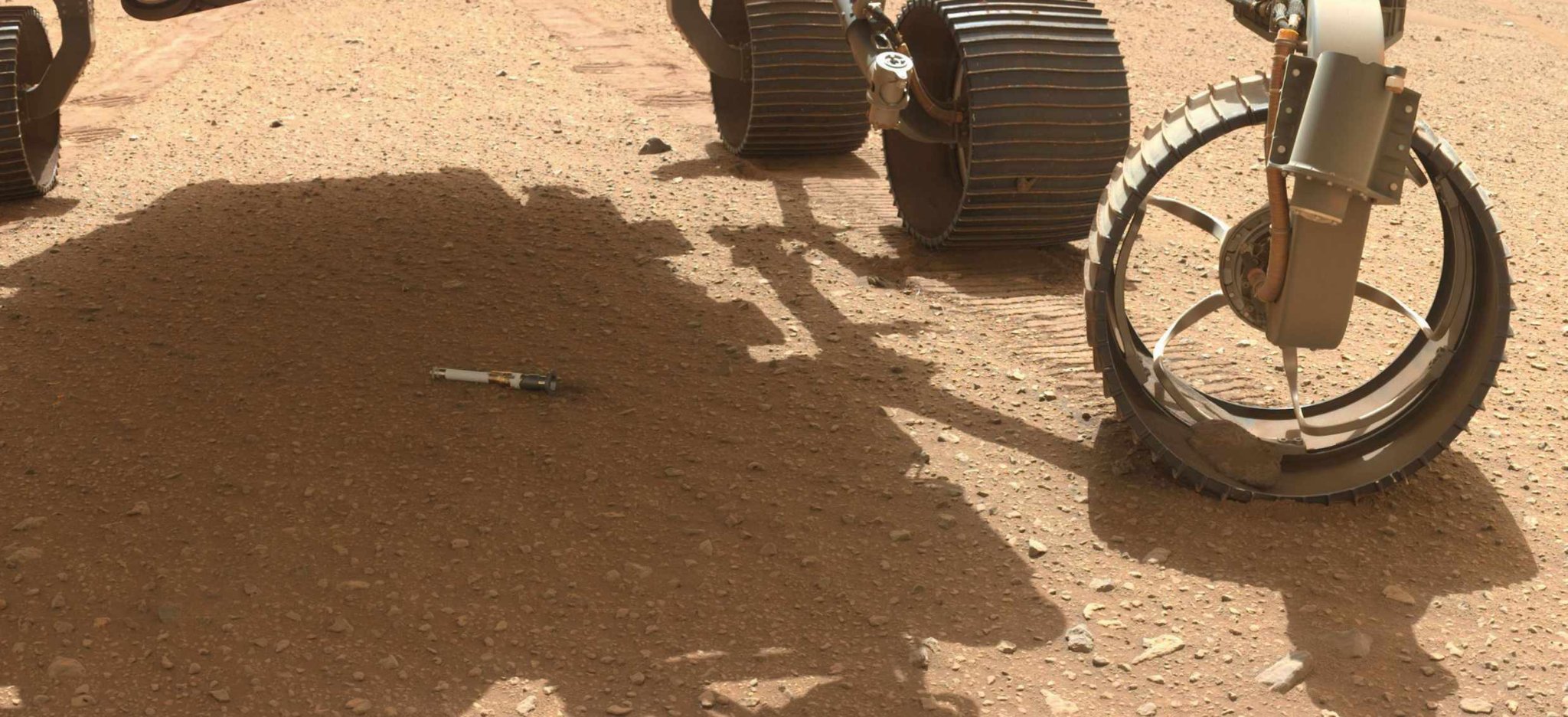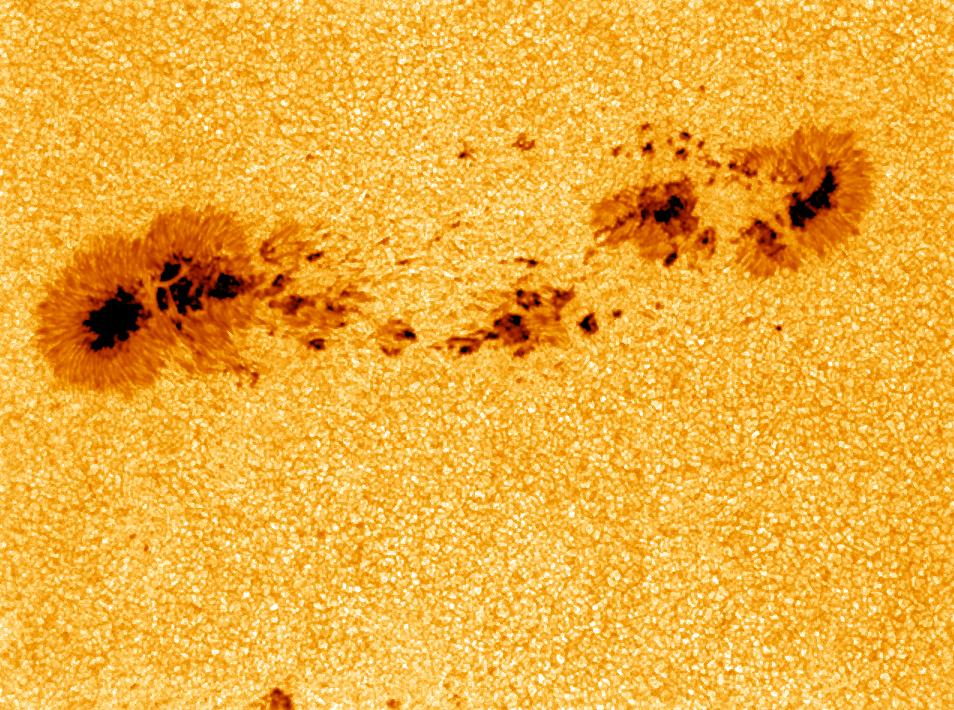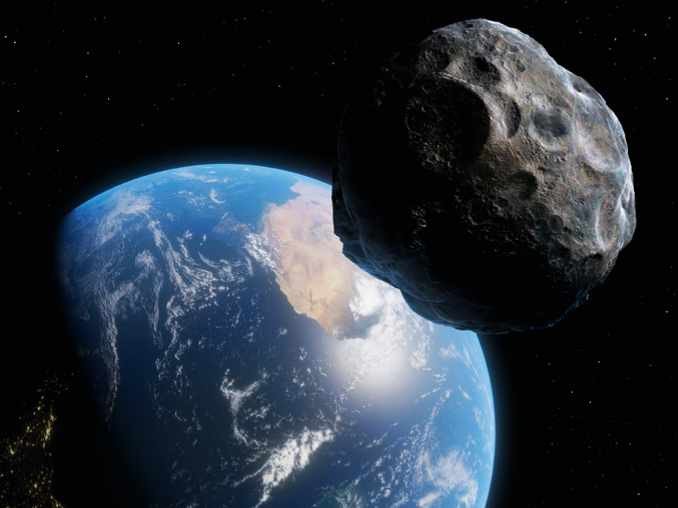The Sky at Night TV show, past, present and future
Inside The Sky at Night
In April’s episode of The Sky at Night, chemist Mark Sephton revealed how we’ll look for signs of Martian life in samples collected by Perseverance

The search for life beyond Earth is entering an exciting period. Traditionally, we’ve investigated our planetary neighbour Mars with landers and rovers that examine the landscape using their onboard instruments. This ‘in-situ’ approach essentially delivers a restricted collection of instrumentation to a place where it has access to a large amount of sample material.
Now, though, the search for life on Mars is entering a time of sample return. This inverts the traditional in-situ approach, by taking a restricted amount of sample – in the case of Mars Sample Return, about half a kilogram – and bringing it to Earth where it can be analysed by an entire world’s worth of highly specified laboratories. Moreover, laboratory methods are constantly improving; the samples are expected to arrive in the next decade, and the 2030s should be a time of unprecedented analytical capability.
The first leg of Mars Sample Return is currently underway. The Mars 2020 mission and its Perseverance rover is collecting rock, soil and gas samples in Jezero Crater, a 45km-wide impact structure in the Nili Fossae region. Jezero Crater was chosen as a landing site because it contains a delta or fan which we believe suggests that flowing water filled the structure to form a crater lake. Using its suite of scientific instruments, Perseverance is able to identify materials in the landscape around it, looking for those which may be of interest for the scientific community.
On Earth, all known biochemistry relies on liquid water, so the presence of a lake indicates a potentially habitable environment. It’s possible that sediments deposited in the lake could preserve signals of this past life, if it existed. Here on Earth, sediments associated with deltas are prodigious preservers of life’s organic remains and we hope this has, at least in part, been replicated on Mars.
Message in a bottle
The rocks which may contain evidence of past life are probably very old. Compared to Earth, the Red Planet lost its magnetic field and atmosphere relatively quickly, and without their protective and warming roles, Mars’s habitability would decrease over time. Old rocks present some challenges because the longer materials are stored within them, the higher the likelihood that something would happen to them, causing them to degrade. It could be that the primary signals of life, though once present, have long since been lost. For this reason, it will be more important than ever to choose the best samples to return.
If organic matter has managed to survive in the samples, astrobiologists will be able to begin a forensic analysis on them that they could never do with Perseverance’s limited suite of instruments. Analytical instruments such as mass spectrometers – which can pick out a vast array of elements and chemicals – can interrogate these samples, looking for evidence of past life. Terrestrial life uses specific organic compounds which allow its biochemistry to operate. If such compounds are well-preserved, they would provide a detailed architecture of life’s organic remains that’s distinguishable from any nonbiological counterparts. Hopefully, we’ll be able to obtain a great amount of interpretative detail and reveal organic markers of life that will tell us both about the parent organism and the environment in which it lived.
With ongoing activities on Mars and the prospect of sample return, there are intense preparations being made back on Earth. Researchers are being trained and techniques are being optimised. When the Mars samples are brought back, the terrestrial scientific community will be ready and waiting.

Mark Sephton is a professor of organic chemistry and sample return scientist on the Mars 2020 science team
Looking back: The Sky at Night
18 May 1977

On the 18 May 1977 episode, Patrick Moore was joined by solar scientist Ron Maddison to discuss the ongoing solar cycle. Our Sun goes through a cycle of increasing and decreasing solar activity spanning roughly 11 years, and at the time of the episode Solar Cycle 21 was just getting under way.
Solar cycles are normally tracked via the number of sunspots visible on the surface, and in 1977 they were being slow to rise. Given that the previous cycle had experienced extremely low activity, it was thought the same might happen again. However, shortly after the episode aired, sunspot numbers began to rise and the cycle had its most active month in November 1979 – just two years after it began.
The number of sunspots has been measured regularly since the 18th century, though sporadic records exist from earlier times. In the decade leading up to the episode, new satellites were being launched to constantly observe the Sun, beginning an unbroken era of space monitoring that continues to this day.
These observations clearly show that some solar maximums are more active than others. These active years appear to follow their own cycle, over roughly a century. And yet while decades of monitoring allows us to make predictions, the Sun sometimes throws a curve ball. Our current cycle, 25, has surprised solar scientists by being much stronger than expected. It seems we still have much to learn about our star.

MAY
Will an asteroid destroy Earth? How real is the threat of an asteroid impact on Earth? In this episode, Maggie learns how near-Earth asteroids are monitored, while Chris discovers more about the recent DART mission that smashed into an asteroid to change its orbit. Plus, news about the Winchcombe meteorite that suggests asteroids might bring life, as well as destruction, to Earth.
BBC Four, 10 May, 10pm (first repeat will be on BBC Four, 18 May, 7pm)
Check www.bbc.co.uk/skyatnight for more up-to-date information
